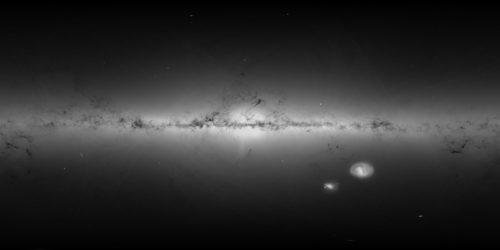Accept all cookies Accept only essential cookies See our Cookie Notice

About ESA
The European Space Agency (ESA) is Europe’s gateway to space. Its mission is to shape the development of Europe’s space capability and ensure that investment in space continues to deliver benefits to the citizens of Europe and the world.
Highlights
ESA - United space in Europe
This is ESA ESA facts Member States & Cooperating States Funding Director General Top management For Member State Delegations European vision European Space Policy ESA & EU Space Councils Responsibility & Sustainability Annual Report Calendar of meetings Corporate newsEstablishments & sites
ESA Headquarters ESA ESTEC ESA ESOC ESA ESRIN ESA EAC ESA ESAC Europe's Spaceport ESA ESEC ESA ECSAT Brussels Office Washington OfficeWorking with ESA
Business with ESA ESA Commercialisation Gateway Law at ESA Careers Cyber resilience at ESA IT at ESA Newsroom Partnerships Merchandising Licence Education Open Space Innovation Platform Integrity and Reporting Administrative Tribunal Health and SafetyMore about ESA
History ESA Historical Archives Exhibitions Publications Art & Culture ESA Merchandise Kids Diversity ESA Brand CentreLatest
Space in Member States
Find out more about space activities in our 23 Member States, and understand how ESA works together with their national agencies, institutions and organisations.
Science & Exploration
Exploring our Solar System and unlocking the secrets of the Universe
Go to topicAstronauts
Missions
Juice Euclid Webb Solar Orbiter BepiColombo Gaia ExoMars Cheops Exoplanet missions More missionsActivities
International Space Station Orion service module Gateway Concordia Caves & Pangaea BenefitsLatest
Space Safety
Protecting life and infrastructure on Earth and in orbit
Go to topicAsteroids
Asteroids and Planetary Defence Asteroid danger explained Flyeye telescope: asteroid detection Hera mission: asteroid deflection Near-Earth Object Coordination CentreSpace junk
About space debris Space debris by the numbers Space Environment Report In space refuelling, refurbishing and removingSafety from space
Clean Space ecodesign Zero Debris Technologies Space for Earth Supporting Sustainable DevelopmentLatest
Applications
Using space to benefit citizens and meet future challenges on Earth
Go to topicObserving the Earth
Observing the Earth Future EO Copernicus Meteorology Space for our climate Satellite missionsCommercialisation
ESA Commercialisation Gateway Open Space Innovation Platform Business Incubation ESA Space SolutionsEnabling & Support
Making space accessible and developing the technologies for the future
Go to topicBuilding missions
Space Engineering and Technology Test centre Laboratories Concurrent Design Facility Preparing for the future Shaping the Future Discovery and Preparation Advanced Concepts TeamSpace transportation
Space Transportation Ariane Vega Space Rider Future space transportation Boost! Europe's Spaceport Launches from Europe's Spaceport from 2012Latest

Draco dwarf galaxy
Thank you for liking
You have already liked this page, you can only like it once!
This three-paneled image shows different perspectives of the Draco dwarf spheroidal galaxy. A team of astronomers analyzed observations by the NASA/ESA Hubble Space Telescope taken over a span of 18 years to measure the dynamic motions of stars within the Draco dwarf galaxy, a system located roughly 250,000 light-years from Earth. The telescope’s extensive baseline and data archive enabled the team to build the most accurate three-dimensional map of the stars’ movements within the system. These improved measurements are helping to shed “light” on the mysterious qualities and behavior of dark matter, the Universe’s invisible “glue.”
[Image description: At left is the main image: a wide-field view of the galaxy from the Digitized Sky Survey. Many yellow, blue-white, and white stars are dispersed across the black background of space. A faint brown oval surrounds the central area of the image. Within this area are two small graphic overlays: a square and a diamond. These two small overlays correspond to the two magnified views at right, as seen by the Hubble Space Telescope. The small square in the main image corresponds to the top right square. The small diamond in the main image corresponds to the bottom right square. The magnified view at top right shows a large white circle with four diffraction spikes in the top left. Small white specks and orange dots are scattered across the black background. A large spiral galaxy is seen face-on at top right. The magnified view at bottom right shows small white specks and orange dots scattered across the black background.]
-
CREDIT
NASA, ESA, Digitized Sky Survey, Roeland van der Marel (STScI) -
LICENCE
CC BY 4.0 INT or ESA Standard Licence
(content can be used under either licence)

Draco and Ursa Minor dwarf galaxies

Dwarf galaxies around the Milky Way (interactive)

A galaxy on edge

Galaxy GS-NDG-9422















 Germany
Germany
 Austria
Austria
 Belgium
Belgium
 Denmark
Denmark
 Spain
Spain
 Estonia
Estonia
 Finland
Finland
 France
France
 Greece
Greece
 Hungary
Hungary
 Ireland
Ireland
 Italy
Italy
 Luxembourg
Luxembourg
 Norway
Norway
 The Netherlands
The Netherlands
 Poland
Poland
 Portugal
Portugal
 Czechia
Czechia
 Romania
Romania
 United Kingdom
United Kingdom
 Slovenia
Slovenia
 Sweden
Sweden
 Switzerland
Switzerland
























